Interview with Jake Raslan & Lorenzo Buscaroli, Atelier Wren
It takes a meticulous eye for detail to work in luxury hospitality design, but that’s something that comes naturally to design duo Atelier Wren.
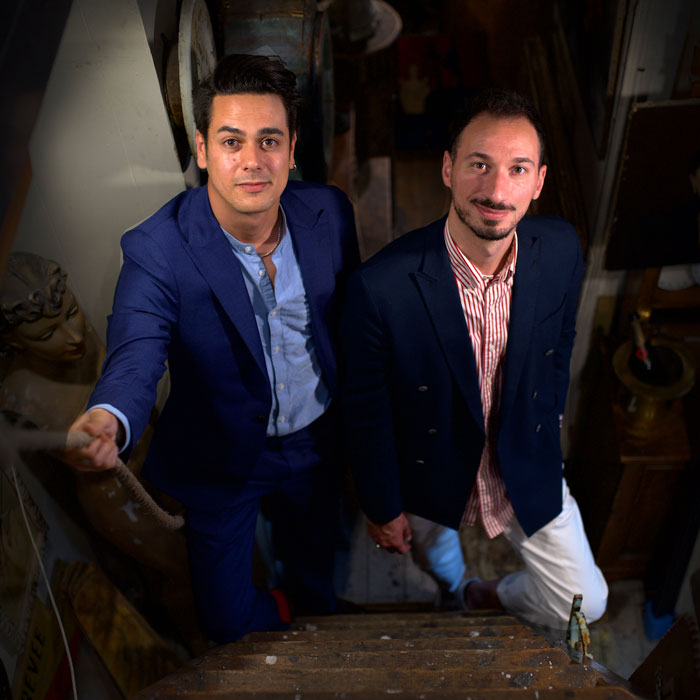
Jake Raslan and Lorenzo Buscaroli
Having formed in 2021 you could be forgiven for assuming that the brand is still cutting it’s teeth, but a closer look at the work founders Jake Raslan and Lorenzo Buscaroli have produced shows a wealth of experience and a unique pairing of skillsets to boot. Having initially trained as an architect at the Glasgow School of Art, Jake worked on projects including the National Theatre in Abu Dhabi before moving into interior design with a role at London’s Russell Sage Studio. Although Lorenzo studied structural engineering in his native Italy, he too found his way into interior design, and over a period of years working together at the same practice, the pair realised each was the ying to the others yang. This insight of working on high end projects, late nights together, laid the perfect foundations to set up on their own and the studio has gone from strength to strength. As we reported in March, they took the reins on the design of Boston seafood brand Saltie Girl’s first London restaurant, while May saw the opening of the London outpost for the House of Ming restaurant, which oozes will bespoke features and handcrafted details. Amid a busy schedule, which includes a number of live projects, the pair took the time to share a little more about what makes them tick.
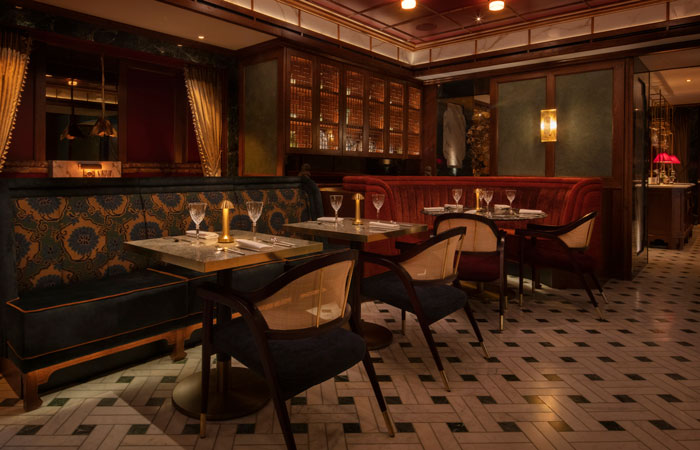
House of Ming, London
Alys Bryan (AB): Atelier Wren is a relatively new company so I wonder if you can start by explaining it’s origins and describing how you approach design.
Jake Raslan (JR): When we started up, we thought we’d start off slowly. But Lorenzo and I had already built a very good reputation amongst restauranteurs as well as consultants and contractors so we were busy from the off. We look at projects very holistically and enjoy going into the detail. In terms of process, we generally start off with developing the concept with the clients, before delving into the minutiae with the drawing pack where we will design everything from where the hinges go, to figuring out the complex junctions of moulding profile and working out the circuiting for the lighting design.
Lorenzo Buscaroli (LB): Arguably, this level of detailing may cost us in studio-time, but it has stood us in good stead because it means we catch problems early as we develop the design. Evidentially this reputation has led to consultants, builders, project managers, and then clients recommending us to their friends or contacts.
JR: We’ve been lucky with the press; for example our project Saltie Girl got a lot of great exposure, but mostly I think we have been super lucky with all our clients thus far: they have been marvellous; encouraging, driven and enthusiastic. That means a lot because we do go on a journey with them…
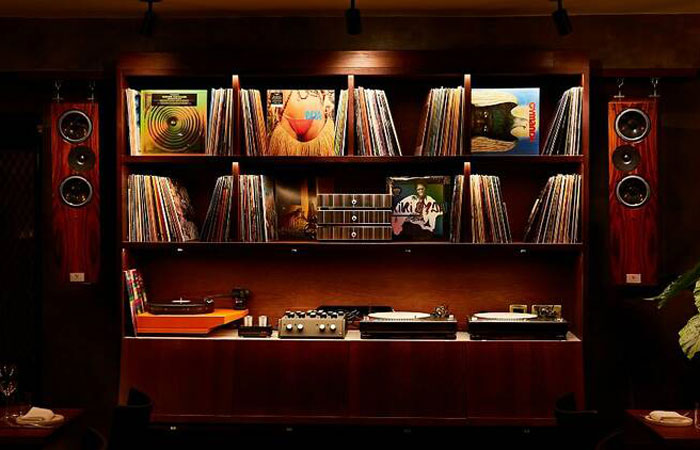
Caia, Golborne Road in Notting Hill
LB: For example, our first major project, Caia, was for younger clients who were starting up like us – in their case two young guys wanting to start their first restaurant on the uber cool Golborne Road in Notting Hill. It was a tight budget and the site had its constraints but it was a really exciting process, from developing the initial ideas with those guys to opening. They have done an excellent job with the food and music since the place opened, so have won a few awards and the brilliant write-ups in turn helped us to grow. And then we’ve developed project by project by project to the point where we’ve had to expand the team, along with acquiring a bigger office space, buying more computers, and generally improving the studio infrastructure to take on more projects. From cafes to super-suites for five-star hotels, you’ll see a real variety to the projects we do.
JR: Most recently we did House of Ming which we had so much fun designing, but there’s quite a lot of projects that are on site now and others that have been taking a while to “hit site”. So there’s a lot of projects that are going to come out!
AB: The projects that we’ve published already on Design Insider were both restaurant projects, including Saltie Girl. Do you find that the majority of your work sits in that area? Or you just mentioned working in the hotel side of hospitality as well?
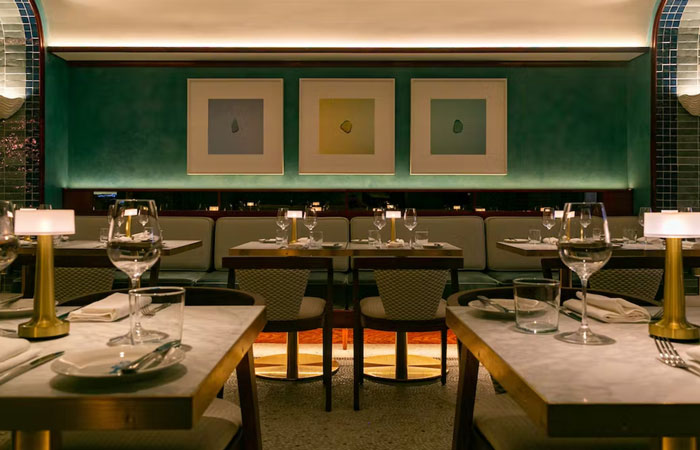
Saltie Girl, London
JR: Our bread and butter is restaurants. That’s probably where we’ve got the most stock in the industry in terms of people who know us, not least chefs. But we’ve got some really interesting, different types of projects on the go, including luxury health, performance and recovery facilities.
LB: These are like health clubs that take a truly holistic approach. I think a lot of the trends may have started in America. These are places where you can have an IV drip, cryo machines, hyperbaric rooms, and even tanks where you can immerse yourself in freezing cold water. It requires different considerations to restaurant design. But the thing that connects everything is the operation because these places are not residential settings.
AB: It’s really interesting, we should do a separate focus article on the health clubs! You both come from different design backgrounds and I wonder how this might influence the way you design spaces?
JR: We have to be Jack-of-all-trades and so our varied background certainly helps. Although we are not hired to consult on it, we have an understanding of building methodology, planning, project management and engineering principles. That influences our thinking with projects as we acknowledge the various constraints and opportunities early on with a new site. It does also mean that we have high expectations within our studio of the quality of our drawings and thinking behind each project.
LB: We are both very aware of the experiential aspect of designing interiors, so our different upbringings, life experiences also help. Jake and I have built a talented international team that also have backgrounds in academia, fine art as well as interior architecture. We value that mix.
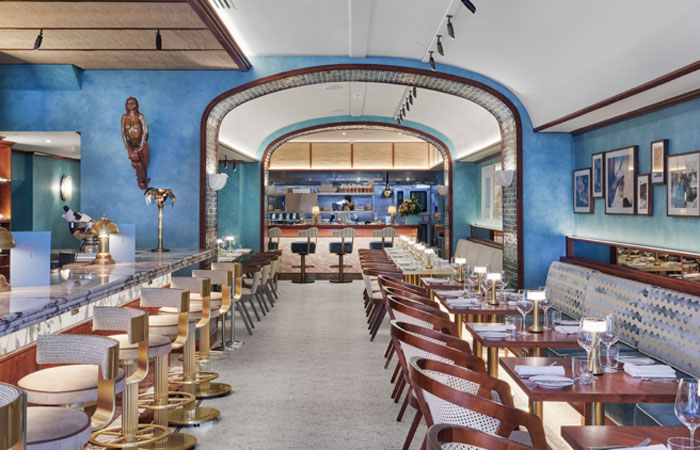
Saltie Girl, London
AB: With that guest experience in mind, what have you learned is at the core of delivering the overall experience that you’re being asked for? And has the guest experience that clients are looking for changed in the two years that you’ve been operating as Atelier Wren?
JR: Guests will interact via touch and perhaps have a better awareness of materiality than ever before. Nowadays you don’t get away with plastic tops in “five-star” venues and then operationally, everything’s got to work. But the biggest change has probably come about because of social media really. Clients will often ask us about the ‘Instagrammable Moment’, because ultimately it helps their business. If they’re photographed regularly and shared on social media, it’s free advertising, so we have to think about that. As such, vistas are something we often talk about to our clients when we’re explaining a scheme. That view, when you sit and dine, it’s so important because it’s going to get photographed if it looks beautiful.
LB: Clients understand the value of social media so much so that they know that if their food is photographed with an amazing material, such as incredible pink marble, then it’s going to be showcased even more. This is probably where the value of the interior designer comes into it’s own and a client can really see the monetary value.
AB: Are there any other key concepts that you repeatedly go back to or you feel particularly passionate about? I’m thinking maybe some designers it’s sustainability, some it’s biophilic design, some it’s wellbeing. Are there any of those particular concepts that you are particularly drawn to exploring on your projects?
JR: Well one thing we try to consistently do is use British artisans and artisanal products. Take House of Ming for example, there were a lot of British craftsmen and artists that were involved in that project.
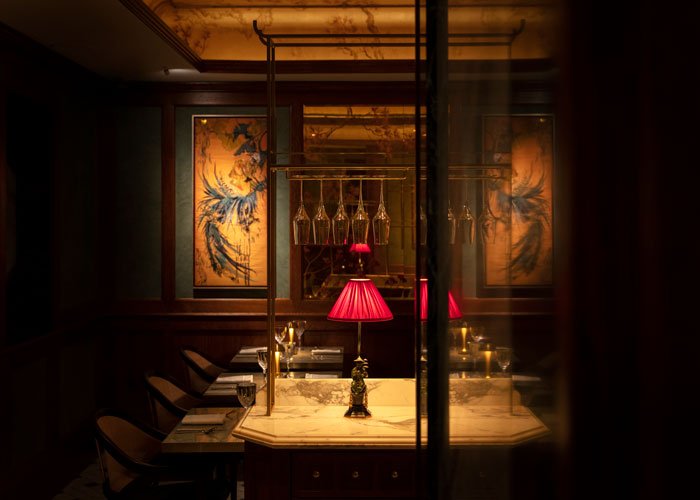
Lara Fiorentino hand painted canvas, House of Ming, London
LB: Yes, all the canvas and wallpaper, were hand-painted in East London by a dedicated team of scenic artists led by Lara Fiorentino (based in North East London). These super skilled artists will also work on West End Theatre productions as well as creating backdrops for the likes of Netflix and HBO for TV and film. For House of Ming they painted offsite which reduced time required onsite. That in turn, helped the other builder trades onsite as it allowed them to crack on! Then, towards the end of the build, for two weeks or so, wallpaper that was crafted over in the East End was being hung on walls and ceilings. All very neat and quick…
JR: Yes… the transformation of the site, after the scenic artists work was hung was quite spectacular. Even with the light fittings, the metal may have been imported, but they were manufactured in Manchester. We modelled them in 3D software, working out where we wanted the veins of each leaf to be, and then they were folded and formed by Nocturne Workshop in Manchester.
AB: So what you’re really finding exciting is building these relationships with the artisan crafts people, and presumably that adds a level of detail and design that is obviously unique to your projects as well?
JR: Absolutely! You have to be a people person in our line of business and we are! We love working with (and learning from) all the people involved in our projects. We work very closely with the artisans who produce our wall and ceiling finishes, and we also work closely with the artists we commission to make any bespoke artwork that we have framed and hung on the wall. That was Jacky Puzey in the case of House of Ming. She is an embroidery artist, whose work can also be found in the lobby of the Nomad Hotel in Covent Garden, London. There’s a narrative that’s nice for clients in that the work we develop with the artists is very specific to their project. It is unique and bespoke. Carefully considered, and tailored specifically to their project…
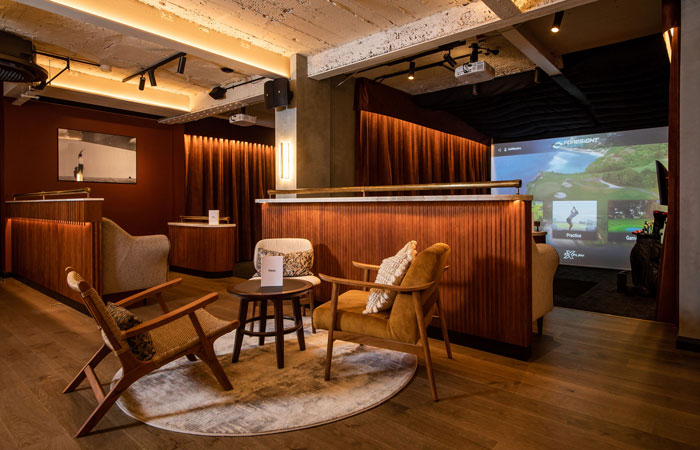
Pitch, Soho
LB: …We have used the narrative developed with artists, to do things like highlight obscure and wonderful traits of the specific region that the restaurant’s cuisine comes from. In the past we have also done things like try to emphasize the personality of the clients, that we know will make their venue special. For example the founders of Pitch (private member clubs with bars built around indoor golf driving ranges!) are massive vinyl heads. So in the last site we did for them in Soho, we worked with British carpenters to develop a DJ booth and vinyl storage that they love to play at.
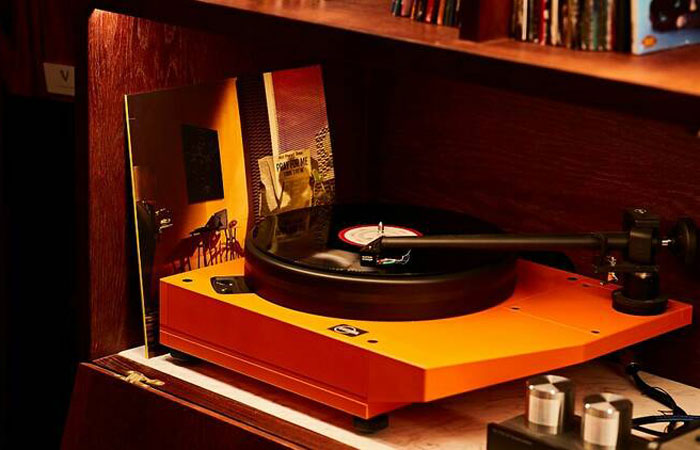
Caia, Golborne Road in Notting Hill
JR: The Pitch guys and the Caia guys both love their music and know a thing or two about what will work for them operationally so the DJ ‘booths’ for both venues were great examples of how the designer-client and fabricator-designer collaboration can work.
AB: So I always like to conclude any sort of conversation or interview with a look to the future. I know you have some new openings on the horizon, and you’ve got some other projects due to launch but can you share any details of what we can expect of the studio?
JR: Well, there are certainly some current projects, but annoyingly I think we probably can’t divulge too much into those. Suffice to say, there a nice mix of restaurants, cafes, bars on coming from us. Slight tangent, but we know what our dream projects would be..!
LB: Yeah, well just because I’m Italian, I would love for Atelier Wren to one day work with some more Italian chefs, such as Massimo Bottura. It sounds like a cliché because he’s the three Michelin star chef, but it would be so amazing.
JR: I think the other thing that really interests us about Massimo Bottura is the guy is a cool dude. You mentioned sustainability and Bottura is one of the guys who, okay, he’s not a designer, he is not building things, but he is somebody who’s showing how sustainability can work in restaurants and still make it profitable. He cares about the vulnerable in our societies and tackles important issues such as food wastage. He’s an altruistic guy.
LB: “A cool dude, altruistic guy”… If he’s reading this now, surely he’s reaching for his mobile to give us a call?
JR: Hahah! Yeah, lets see! For me being part Malay, I’d also love to do a really cool Malay or Nyonya restaurant one day. Its quite niche, but the Nyonya cuisine is a really interesting and unique mix of Malay, Chinese, South Indian and Javanese flavours. I know Mambow near where I live in South East London does it very well.
AB: The way Bottura works, aligns with the way you want to work and your ambitions as well?
JR: I’m not sure if it’s a defining thing for us, but I think it’s something that we respect him massively for. For us, the dream client is somebody who trusts us to get on with it, but is still involved and passionate; we respect that. Someone who’s doing great things, or is going to do great things. And we’ve been very fortunate with our clients so far, they’ve been really good people. Very passionate, involved, but also trusting, following us down the rabbit hole with some crazy ideas and we respect them all. And I think it would be great to continue to work with more people like that.




